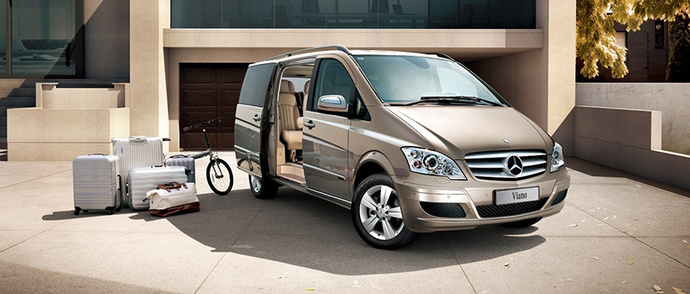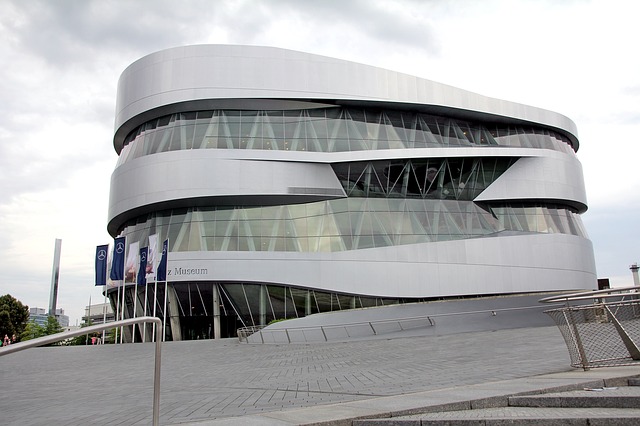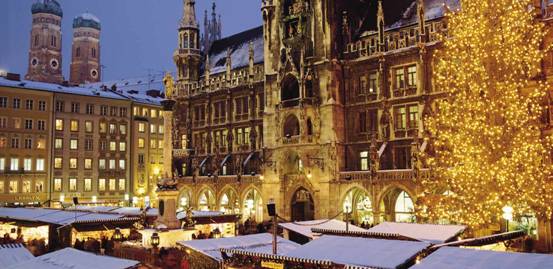
A Comprehensive Travel Guide to Germany's Iconic Cities
This guide offers a detailed journey through some of Germany's most captivating destinations, from the financial hub of Frankfurt to the Bavarian charm of Munich. It traverses the Romantic Road, the Rhine Valley, the northern Hanseatic cities, and the historic capitals, providing a rich tapestry of German culture, history, and cuisine.
Frankfurt: The Gateway to Germany
Frankfurt am Main, often simply called Frankfurt, is Germany's financial capital and a major transportation hub. While known for its impressive skyline of skyscrapers, earning it the nickname "Mainhattan," it also boasts a charming, reconstructed old town.
Attractions: The
Römerberg is the city's historic heart, with beautifully reconstructed medieval buildings. The
Städel Museum houses a world-class art collection, and the
Palmengarten offers a serene escape. For panoramic views, visit the observation deck of the
Main Tower.
Food & Drink: Frankfurt is famous for its
Apfelwein (apple wine), traditionally enjoyed in Sachsenhausen's apple wine taverns. Try
Grüne Soße (green sauce) with boiled eggs and potatoes, and the classic
Frankfurter Würstchen.
Transportation: Frankfurt Airport (FRA) is one of Europe's busiest. The city has an excellent public transport system (U-Bahn, S-Bahn, trams). It's a major hub for Deutsche Bahn (German Railways), making train travel to other cities very convenient.
Accommodation: Options range from luxury hotels in the banking district to more affordable stays near the Hauptbahnhof (main train station) or in the charming Sachsenhausen district.
Rüdesheim & The Rhine Valley: A Romantic Escape
Nestled in the UNESCO World Heritage Rhine Gorge, Rüdesheim is a picturesque wine town that serves as a perfect gateway to exploring the romantic Rhine River.
Attractions: Stroll down the famous
Drosselgasse, a narrow, lively lane lined with wine taverns and music. Take a
Rhine River cruise from Rüdesheim to Koblenz to see countless castles, like the Pfalzgrafenstein Castle and Marksburg Castle. A cable car ride to the
Niederwalddenkmal monument offers stunning valley views.
Food & Drink: This is Riesling country. Sample local wines at a traditional
Weinstube (wine tavern). Pair your wine with regional specialties like
Spundekäs (a creamy cheese spread) and
Zwiebelkuchen (onion tart) in the autumn.
Transportation: Rüdesheim is easily reached by train from Frankfurt. The best way to experience the valley is by boat, with KD Rhine and other operators offering frequent services. Trains run along both sides of the river for a land-based view.
Accommodation: Stay in a family-run guesthouse or a historic hotel in Rüdesheim for an authentic experience. Many offer beautiful views of the Rhine River.
Koblenz: Where Rivers Meet
Koblenz is a historic city situated at the
Deutsches Eck (German Corner), the dramatic confluence of the Rhine and Moselle rivers.
Attractions: The
Deutsches Eck, with its monumental statue of Emperor William I, is the city's symbol. Take a cable car across the Rhine to the mighty
Ehrenbreitstein Fortress, one of Europe's largest preserved fortresses, offering breathtaking views. The old town (
Altstadt) with its charming squares is perfect for a stroll.
Food & Drink: Koblenz's location means you can enjoy wines from both the Rhine and Moselle regions. Try a hearty dish like
Rheinischer Sauerbraten (a pot roast, traditionally marinated) with raisins and red cabbage.
Transportation: Koblenz is a key railway junction. It's easily accessible by train from Cologne, Frankfurt, and beyond. The city center is very walkable, and the cable car to the fortress is a must.
Cologne: The Cathedral City
Cologne (Köln) is a vibrant, historic metropolis on the Rhine, dominated by its awe-inspiring cathedral. It's known for its liberal spirit, carnival celebrations, and distinctive Kölsch beer.
Attractions: The
Cologne Cathedral, a UNESCO World Heritage site, is a Gothic masterpiece. Climb the 533 steps to the south tower for a reward view. Cross the
Hohenzollern Bridge, famous for its "love locks." The
Museum Ludwig features excellent modern art, including a significant Pop Art collection. The
Roman-Germanic Museum showcases the city's ancient history.
Food & Drink: Cologne's beer is called
Kölsch, a light, crisp ale served in tall, thin 0.2-liter glasses called
Stangen. It's traditionally served by a
Köbes (waiter) in a
Brauhaus. Try
Halve Hahn (a rye roll with cheese) or
Himmel un Ääd (black pudding with mashed potatoes and apple sauce).
Transportation: Cologne's Hauptbahnhof is right next to the cathedral. The city has an efficient U-Bahn and S-Bahn network. The airport (CGN) has good connections.
Cultural Insight: Cologne's carnival (
Karneval) is one of Germany's biggest street festivals, reaching its peak on Rose Monday with a massive parade. The city has a thriving LGBTQ+ scene.
Bremen: A City of Fairy Tales and Merchants
Bremen is a historic Hanseatic city with a charming old town and a famous fairy tale connection. It exudes a maritime flair from its Weser River location.
Attractions: The UNESCO-listed
Town Hall and the statue of the
Bremen Town Musicians are must-sees. Explore the quaint
Schnoorviertel, a medieval lane of fishermen's and craftsmen's houses now home to cafes and boutiques. The
Böttcherstrasse is a unique expressionist architecture street.
Food & Drink: As a port city, fish is a specialty. Try
Knipp (a pan-fried sausage made from groats and pork) or labskaus (a corned beef hash). Wash it down with a local beer from the Beck's brewery.
Transportation: Bremen has an international airport (BRE). It's well-connected by train to Hamburg and other northern German cities. The city center is compact and easily explored on foot.
Hamburg: Germany's Maritime Gateway
Hamburg, Germany's second-largest city, is a powerful port with a unique, independent spirit. Its waterways, bridges, and maritime history define its character.
Attractions: The
Elbphilharmonie concert hall is an architectural marvel; visit the plaza for free panoramic views. Explore the vast
Speicherstadt, the world's largest warehouse district and a UNESCO site. Take a boat tour of the port (
Hafen) and visit the lively
St. Pauli Fischmarkt (fish market) on a Sunday morning. The
Reeperbahn is Hamburg's famous entertainment and red-light district.
Food & Drink: Hamburg is synonymous with fish. Enjoy a Fischbrötchen (fish sandwich) at the market. For a fine dining experience, try
Aalsuppe (a sweet-and-sour eel soup) or other North Sea delicacies.
Transportation: Hamburg Airport (HAM) is well-connected. The city has an extensive U-Bahn and S-Bahn system. The Hauptbahnhof is one of Germany's busiest.
Cultural Insight: Hamburg has a rich merchant history and a proud, cosmopolitan identity. Its music scene is legendary, being the birthplace of The Beatles' fame.
Lübeck: The Queen of the Hanseatic League
A former leading city of the Hanseatic League, Lübeck's perfectly preserved medieval old town is a UNESCO World Heritage site, famed for its distinctive Brick Gothic architecture.
Attractions: Enter the old town through the iconic
Holstentor gate. Marvel at the imposing
Lübeck Cathedral and
St. Mary's Church. The narrow alleyways and courtyards (
Gänge) are fascinating to explore. Don't miss the
Niederegger marzipan shop and museum.
Food & Drink: Lübeck is the world capital of marzipan. Sample this almond confectionery from Niederegger. Also try
Lübecker Rotspon, a wine that is aged in the city's cellars.
Transportation: Lübeck is easily reached by train from Hamburg in about 45 minutes. The old town is a pedestrian zone, best explored on foot.
Berlin: The Dynamic Capital
Berlin is a sprawling, vibrant metropolis steeped in history yet relentlessly modern. It is a city of stark contrasts, from its Cold War divisions to its current status as a creative and startup hub.
Attractions:The
Brandenburg Gate is the symbol of German unity. See the remains of the
, an open-air gallery. The 's glass dome offers a stunning view of the city. Reflect at the . Visit Museum Island (
. Experience a classic German meal in a
, Frederick the Great's summer retreat, is the highlight. Explore the vast景點門票
法蘭克福國際機場(FPA)- 法蘭克福市區(中英文接送機)
斯圖加特機場(STR)- 斯圖加特市區 - (中英文接送機)
慕尼黑聖誕市場之旅
Munich Christmas Markets and Christmas Village 2-Hour Tour



